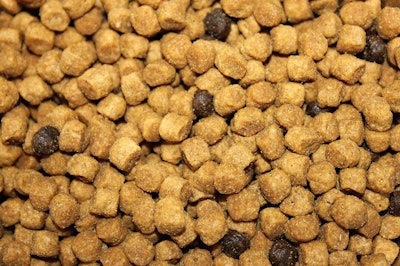
China produced 25 percent more dry pet food in 2017 than 2016, while Russia registered 32 percent growth. Other big gainers in dry pet food production included Poland at 25 percent, Argentina at 22 percent and Hungary at 20.6 percent, according to the 2018 Alltech Global Feed Survey.
It’s certainly no surprise that these emerging pet food markets grew the most in production, as their domestic pet food industries develop and expand, and more multinational producers establish plants, too. In China alone, the government reported that more than 10 new pet food factories had been built or were under construction by the second half of 2016. As those plants have come on line and been joined by others, production volume has only risen.
The numbers on developed pet food markets from the latest Alltech survey are also what you might expect: dry pet food production was flat or slightly declined in markets like the US, UK, France, Germany, Spain, Australia and Japan. That means that, even though retail value sales of pet food might be growing, at least by single digit percentages, in the US and Western Europe, volume sales are not increasing because of premiumization. Sales increases come from higher priced products.
Pet food data reporting and anomalies
While there is a connection, it’s important to remember that dry pet food production does not equate exactly with dry pet food volume sales. Another caveat in reading and interpreting the data from the Alltech survey: they are based on information that the company’s extensive sales and employee network gleaned from its clients around the world, which can sometimes be difficult to obtain, especially in the highly competitive pet food industry. Aidan Connolly, Alltech’s chief innovation officer, said he believes the 2017 data is more sound and reliable than ever, but because of the way the data was generated, some anomalies arose.
For example, Thailand’s dry pet food production soared nearly 75 percent from 2016 to 2017, based on the Alltech data — from .010 million metric tons (MMT) to .756. Yet, rather than being all actual growth, much of that is likely due to under-reporting or lack of complete data in 2016.
Pet food production globally and by region
On a global scale, dry pet food production was up 12 percent in 2017, from 24.98 MMT to 28.1. That represented 3 percent of total global feed production — which was 1.07 billion tons, up 2.6 percent from 2016, according to the Alltech survey.
Europe, both Western and Eastern, was the largest dry pet food producing region, with a 34 percent global share; France alone accounted for 24 percent. Its volume was flat from 2016 to 2017; the growth for the region happened in Eastern Europe, particularly in the countries listed at the beginning of this post. Hungary’s 2017 production of 1.1 MMT (up from .912 in 2016) accounted for 30 percent of its total feed production, Connolly said.
North America followed Europe closely with a 31 percent global share of dry pet food production. Latin was also strong, at 21 percent. Brazil, Mexico and Argentina accounted for 75 percent of the region’s overall feed production in 2017. It’s not a coincidence that those three countries are strong dry pet food producers, too, with all showing growth year over year: 4 percent for Brazil, 10 percent for Mexico and the aforementioned 22 percent for Argentina.
Asia Pacific dry pet food production ranked at a 12 percent global share, and Africa checked in at 2 percent, with the latter seeing 9 percent growth from 2016 to 2017. The Middle East, where pet ownership is still low and often at odds with culture and religious beliefs, didn’t really register in the Alltech survey data.
















